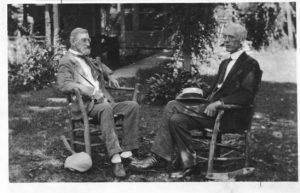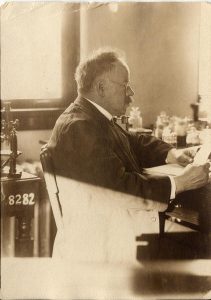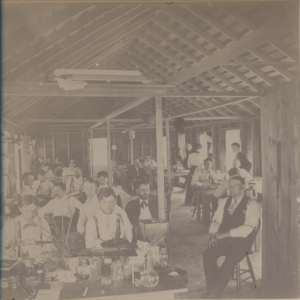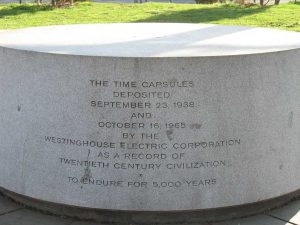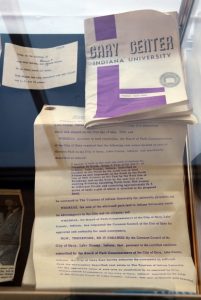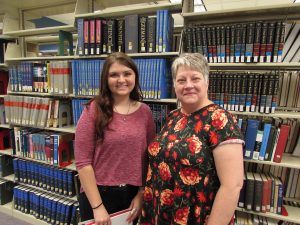By: Caroline Wickes, Bicentennial Intern, Class of 2017, History and Environmental and Sustainability Studies, Bloomington
Sometimes I miss seeing cornfields. The Bloomington area, unglaciated and hilly, doesn’t have the same symmetrical rows as the rest of Indiana. Of course, there is quite a lot of local food to be found—as any community gardener, farmer’s market visitor, or morel hunter will tell you.
On campus, there’s the Hilltop Garden and Nature Center, which is home to an indigo field, honey bees, and community plots. In the town of Bloomington, there are a myriad of urban gardening programs that provide fresh local foods, but unlike my hometown, there is not a single “farm” in sight.

That’s going to change very soon, as a grant was recently approved for an IU Campus Farm. The project, headed by Lea Woodward and James Farmer, intends to provide a space for classes, research, and sustainable food production.
The farm will simultaneously provide fresh local food as well as an impactful learning environment. Located just off campus at the historic Hinkle-Garton Farmstead on East 10th street, the farm can be easily reached by bike or bus. The farm seems to be the next logical step for IU as we look towards a more sustainable food future, but it also recalls our campus’ past.
A lot of the land that is now the town of Bloomington, the IU campus, and the surrounding county was farmland until the early 20th century when the introduction of new farming technology rendered farming in hilly Southern Indiana less efficient and less profitable than tractor-navigable flatlands.
Furthermore, the growth of Indiana University and Bloomington provided more diverse job opportunities. It shifted from a rural agrarian commonwealth to an intellectual community, and education and research, rather than agricultural crops, became the primary product.

The prevailing mindset in the West is that nature is somehow “other.” We have mentally compartmentalized and physically managed wildness so that nature is separate from the human world. Nature has become something we visit on occasion and often with great enjoyment, like a long-distance lover who you see once every few months. We have shaped our own physical environment to give material comfort by controlling and manipulating nature.
In this process, we have left behind a vital connection with the natural world as more and more of it becomes dominated by human concerns. Gardening and farm work subvert this separation by reminding us of the depth of our reliance on soil, water, and sunshine. There is no more tangible example of reciprocity than tending a seed.
Indiana University has developed a fine balance of institutional space and natural space, though our nature is well manicured. Green spaces interlaced through campus make students and faculty happier and provide habitats for birds, rabbits, and our beloved campus squirrels. Walking to class on a crisp fall day is heavenly, there are few things more magical than watching fresh snow frost the bright red clock towers, and spring brings bursts of fresh flowers.
The campus landscape is meant to aesthetically please us and emotionally sustain us, but most of the plants are ornamental and do not produce edible fruits as they did in the past.
Originally our campus was mostly farmland because families needed to farm to support themselves. Andrew Wylie, the first president of the university, maintained a farm on his property near the old Seminary Square campus. In 1884 the University moved to its current location and purchased the Dunn family farm.
For the university to be built, the existing farms had to be transformed. In 1915 faculty, staff, and students cut down 200 apples trees to make room for a new gymnasium. There was a bonfire and festivities surrounding the event. While this might seem a little untoward, at the time there was no shortage of apple trees, but there was not a gymnasium to accommodate the students.

When the United States entered World War I two short years later, every available foot of ground space on campus was used to produce food for the war effort. The university community became involved in production, and classes were held on horticulture. Courses titled “Food and the War,” “Foundations of Food and Nutrition,” and “Conservation of Foods” popped up in the catalog.
Again, during World War II, victory gardens dotted the campus landscape. Botany professor Paul Weatherwax used his victory garden for the experimental raising of castor beans and Russian dandelion rubber for the U.S. government. In 1948, the Hilltop Garden and Nature Center was founded by biology professor Barbara Schalucha.

A one acre alfalfa field that belonged to botany department was redesigned to be a community children’s garden. Hilltop has become an educational and recreational gardening hub for students and the local community.

Indiana University’s landscape has changed drastically over the years. A lot of that change can be attributed to meeting the needs of the community. Farmland was transformed into university spaces as more and more students sought out a quality education.
Now, our campus landscape serves as a refuge and provides a reprieve from today’s fast paced world. As we move forward and assess the needs of the community, it is time to turn once more to the issue of food production.
As our global population increases and the threat of a warming planet looms, the issue of sustainable food production has become ever more pressing. As a research institution, we have the power to address these issues from a methodological perspective.
As a community, we have the responsibility to care for the health and wellbeing of each other and of the planet. This year, Indiana University decided to move forward with a proposal for a campus farm. The farm will serve the IU community by producing food and by providing a crucial space for research and teaching.
In a way, we are coming full circle by returning to farming, but we are also moving forward. Our needs have changed throughout the years and we have changed to accommodate them. Some needs, however, remain central. As human beings, we crave a connection to the past, to ourselves, and to the world around us.
By planting a seed, we satisfy this need for connectivity, by eating the fruits of our labor we satisfy our bodies, and by doing this all as sustainably as possible we satisfy the earth’s need as well. The IU Campus Farm is that seed, and I look forward to watching it grow.
Read more about the creation of IU’s natural spaces here: https://blogs.iu.edu/bicentennialblogs/2017/04/13/the-creation-of-ius-natural-spaces/
https://blogs.iu.edu/bicentennialblogs/2017/05/25/ius-biological-field-station-podcast/
https://blogs.iu.edu/bicentennialblogs/2017/05/25/explore-the-lilly-dickey-woods/
Sources
Steinson, B. (1994). Rural life in Indiana, 1800-1950. Indiana Magazine of History. Vo 90 (3).
Schalucha, B. (1987). The garden named hilltop.
Schweir, C. (2014). New themester exhibit- food on the home front: Wartime production, preservation and deprivation on the IU campus. Indiana University Archives Blog.
Farmer, J., Woodard, L. (2017). Planting the seed: IU campus farm at the Hinkle-Garton farmstead.



